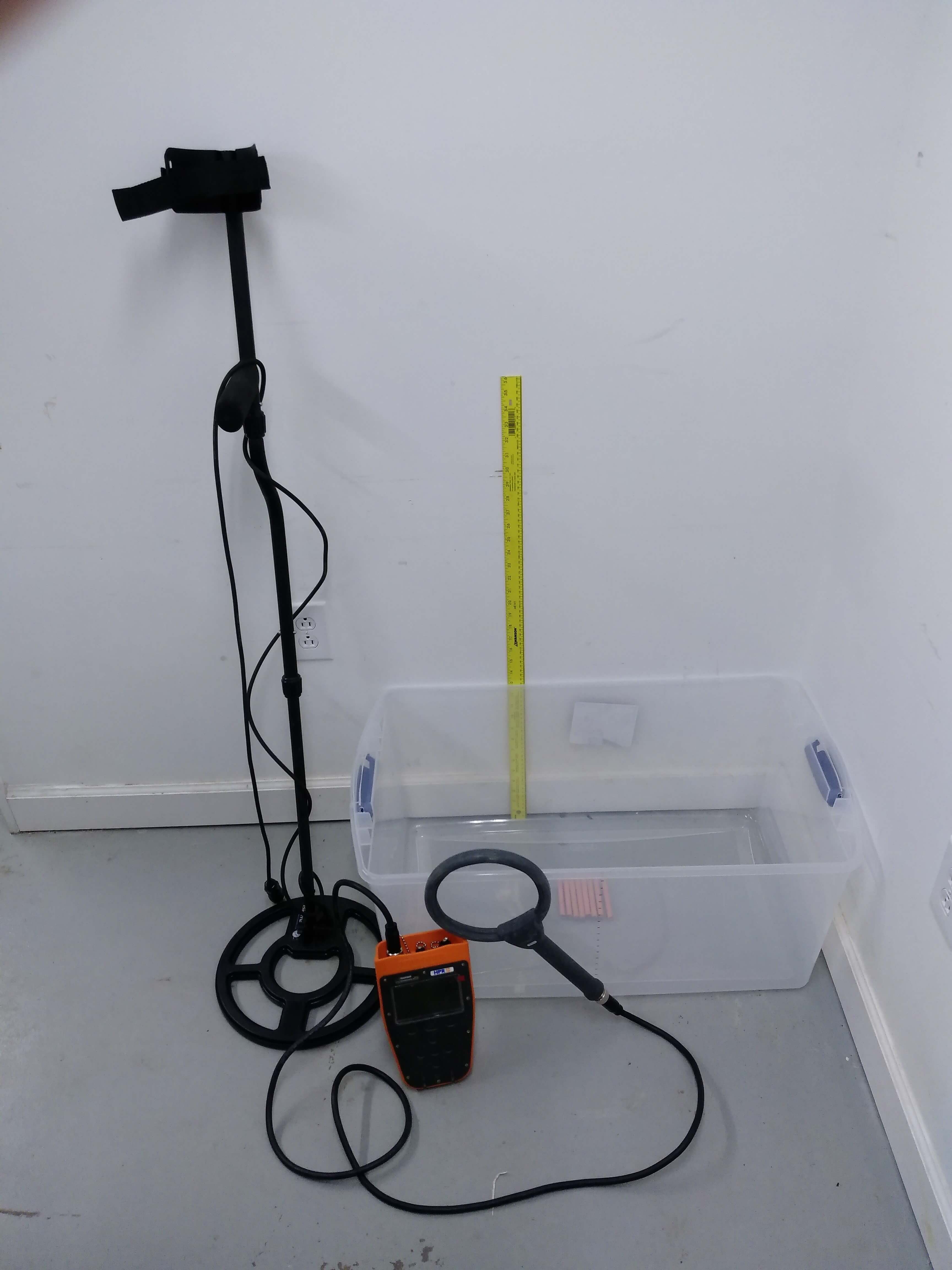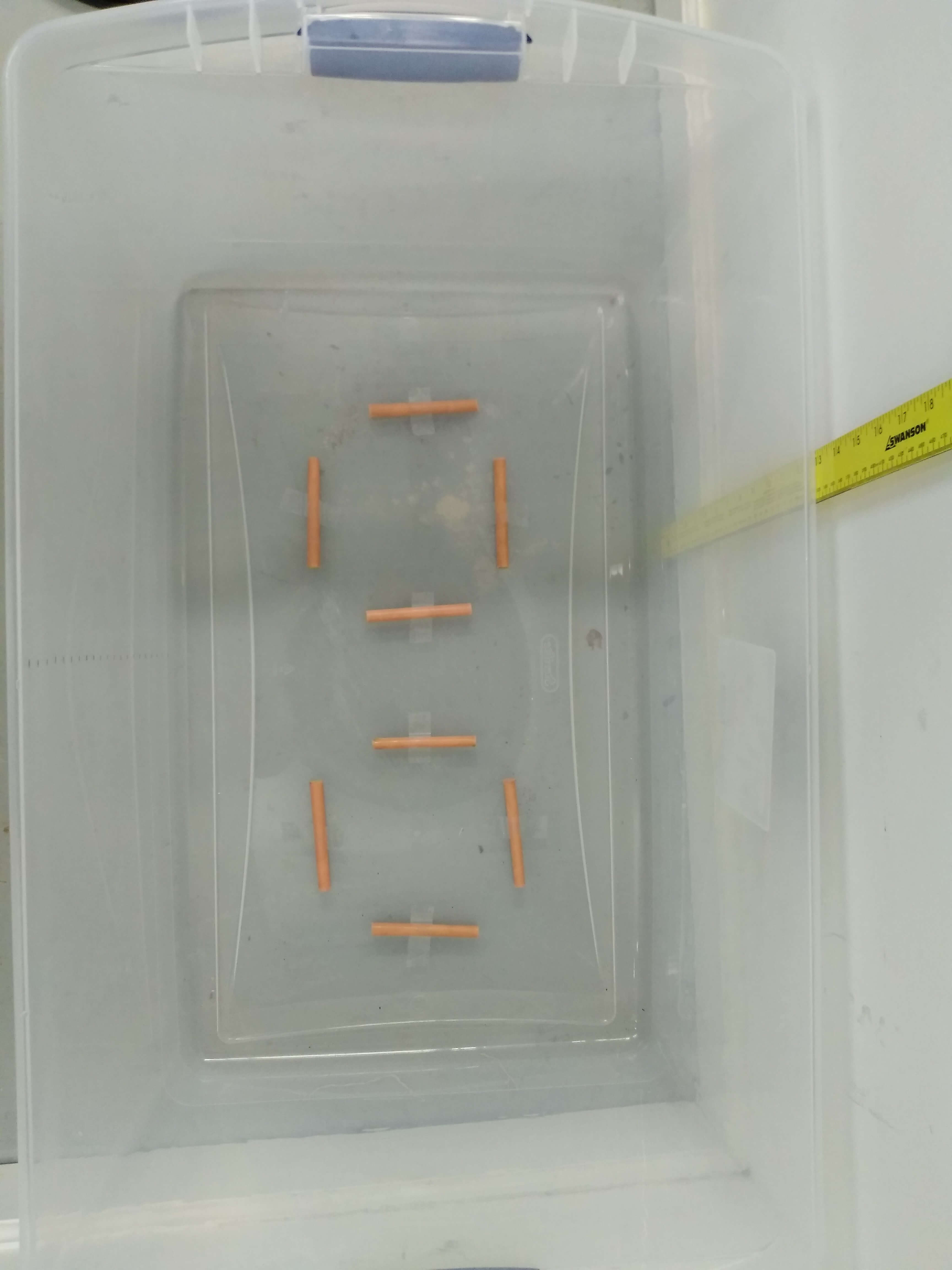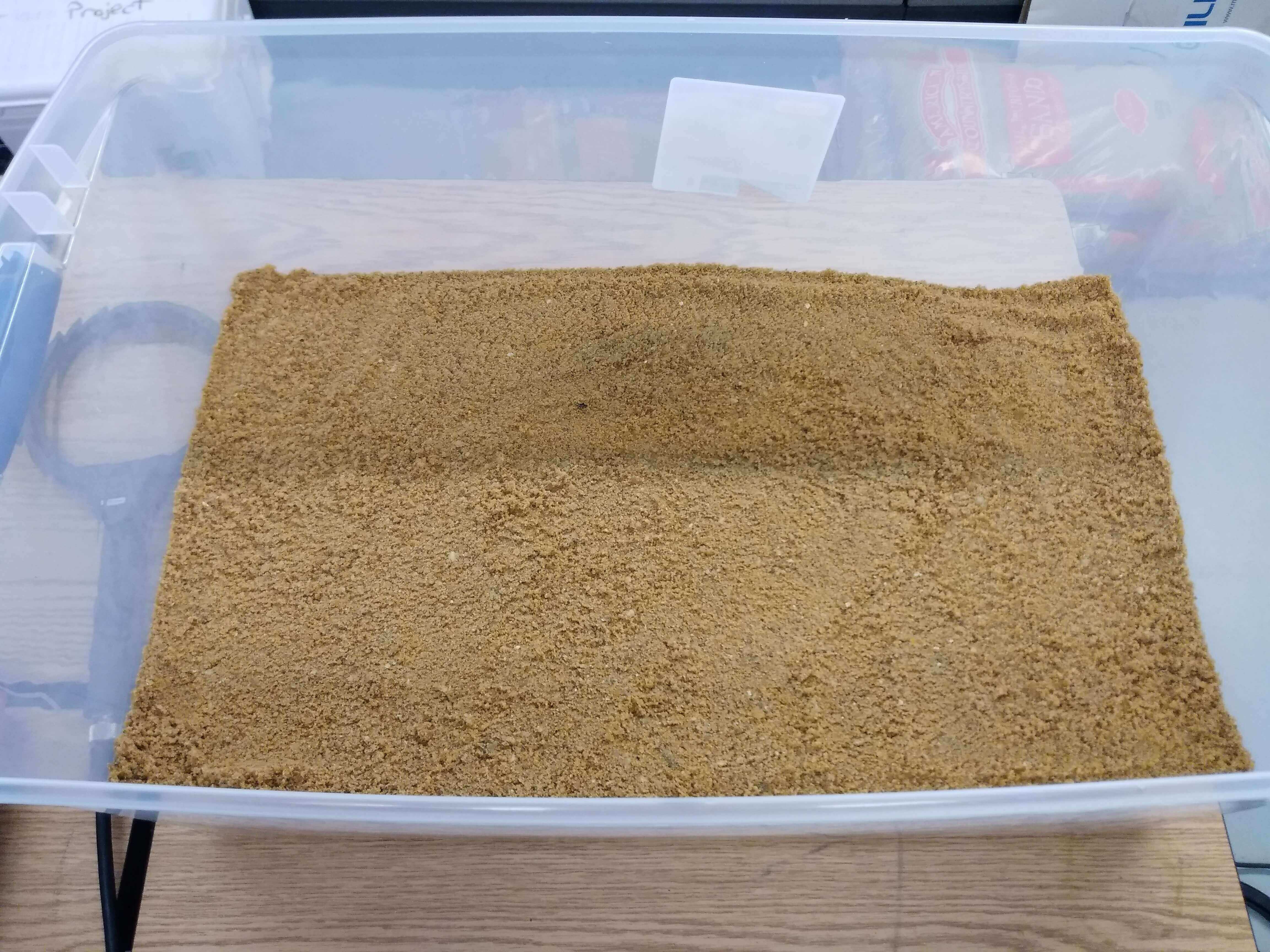The effects of sediment on PIT tag detection-The setup
Sometimes tagged fish aren’t detected because they aren’t there. Sometimes they’re just really good at hiding, even from low-frequency radio signals. The Southern Brook Lamprey (Ichthyomyzon gagei) burrows in sand and soft sediment, presumably to avoid predation and unfavorable environmental conditions. But from our recent experiment, the depth of the PIT tag within the substrate plays a role in it’s detection probability. We’re planning to couple this experiment with others to better understand this complication and how we might, if we can, mitigate it.
Below is the PIT tag reader with two types of antenna.

Below are PIT tag analogs, sealed inside plastic straws, secured to the bottom of a plastic container. Sand was added in 3 cm increments after each scan to estimate the depth at which we could no longer detect the tags.

Below is a top view of the container after approximately 12 cm of sand has been added.
Now on to looking at the results!
